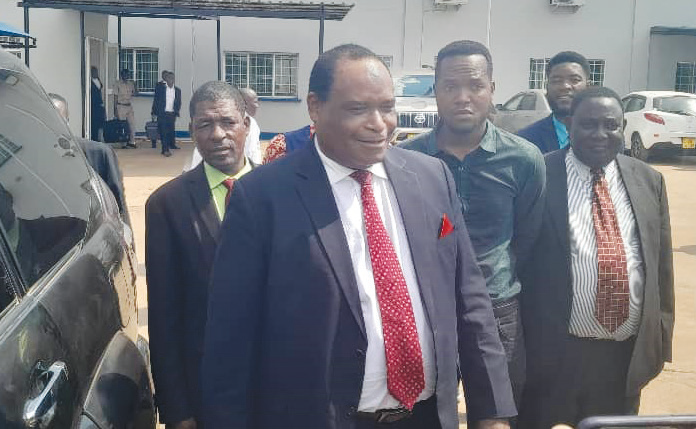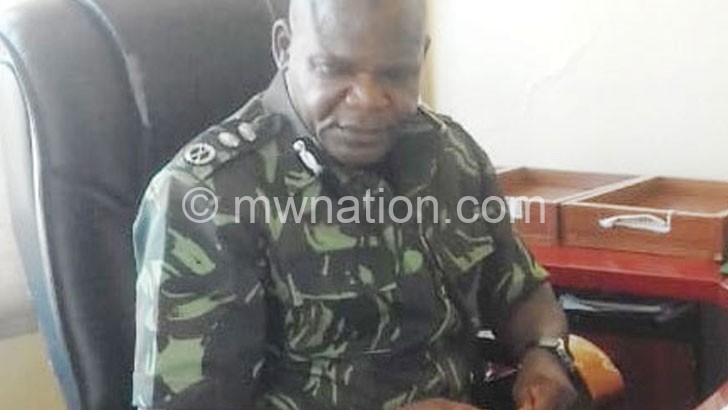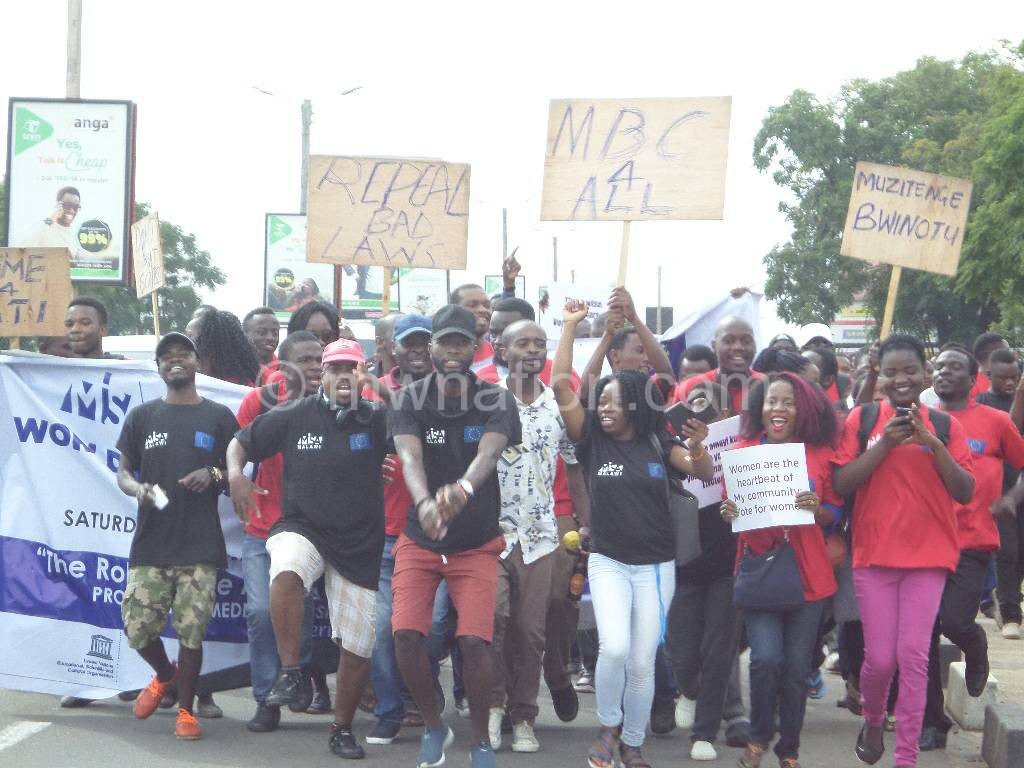Day of terror
What started as a normal day for most residents of Lilongwe degenerated into chaos as police fired tear gas in residential areas along the M1 to disperse protesters, stirring panic among unsuspecting households in the process.
Tension started building around 9am after news spread that the High Court of Malawi had granted an eleventh hour order to stop Human Rights Ambassadors from proceeding with the protests aimed at pushing President Lazarus Chakwera and Vice-President Saulos Chilima to resign and call for a fresh vote.
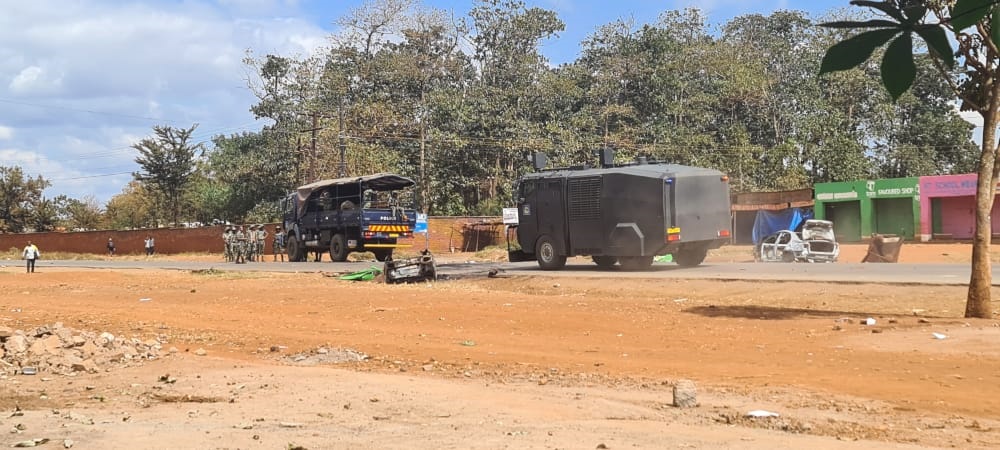
By then people had gathered at Kaphiri Trading Centre along the M1 between Bunda Turn-Off and Biwi Triangle as well as other surrounding areas ready to participate in the march.
In apparent frustration, the people mounted their own protest by barricading several sections of the M1 and feeder roads into residential areas, notably Areas 24, 22 and 36 as well as Falls and Mchesi, making them literally impassable for at least five hours.
They were seen burning old tyres in the middle of the road while some pelted motorists with stones and others looted shops in most of the areas, forcing police to react with excessive force.
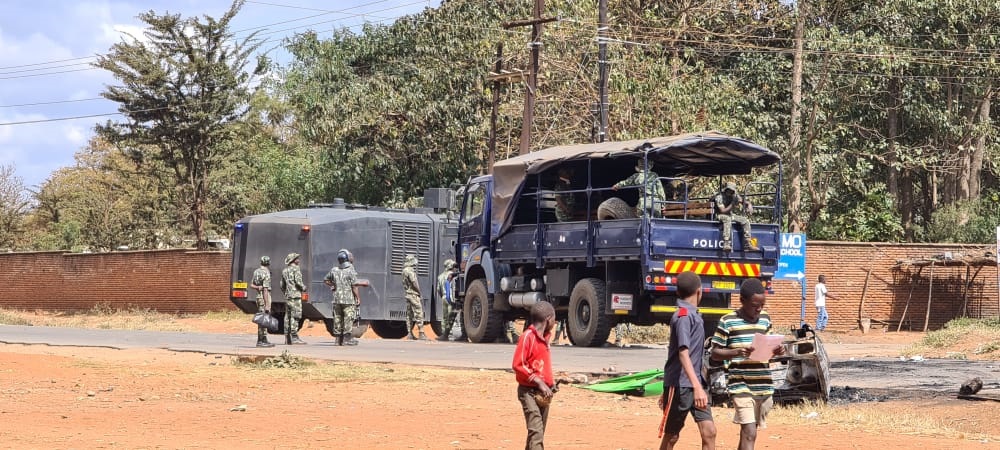
Tear gas was fired without control in residential areas and some of the canisters dropped right in compounds of unsuspecting residents.
The Nation crew, which found itself at the centre of the cross-fire between police and angry protesters, was not spared the effect of the tear gas which was all over the place.
At one of the houses along the M1, a seven-month-old baby and her mother choked on the itchy tear gas smoke after a canister landed right at the door of their house which was not fully closed. While the baby cried uncontrollably, the mother was seen calling for help, but when well-wishers tried to intervene, they were dispersed by police officers.
Around Area 36, The Nation found another asthmatic elderly man gasping for air outside his house as family members wiped his face with a wet towel. The inside of their house was engulfed with tear gas.
One member of the family said: “I do not understand why they are firing tear gas right in our homes. With our patient, we could not be inside the house because of tear gas. We thought we would be ok outside but there is really no difference and the patient is really affected.”
Many observers blamed the police for poor crowd control techniques, but National Police deputy spokesperson Harry Namwaza said in such situations, it is difficult to control who the tear gas should affect.
He said: “It is likely that when tear gas is used, innocent people will be affected. Sometimes people have to analyse and understand situations in which police officers operate, for example, in such volatile and risky situations.
“Police generally use tear gas, when the situation demands so and when it is the only method to ‘disperse’ violent crowds like the one we experienced today. Tear gas is only used in violent situations to disperse violent people/crowds.”
Namwaza said Police use tear gas and other non-lethal weapons to gain control of violent situations without using deadly force.
“The challenge is that those perpetrating violence and all sorts of hooliganism and looting rush into such areas to hide and operate from,” he said.
But the wide firing of tear gas did not seem to scare the protesters, mostly the youth and children, some of whom were also armed with pangas, metal bars and hammers as they took advantage of the situation to damage and loot shops.
Lilongwe Police spokesperson Hastings Chigalu said about 70 people had been arrested by on Wednesday afternoon for inciting violence, unlawful assembly and contempt of court.
He said a number of shops in town and locations such as Area 36 were looted, but police were yet to assess the extent of the damage.
On Wednesday incidents are reminiscent of previous demonstrations where a court injunction seemed to have inflamed the situation.
Coincidentally, on a day like on Wednesday 11 years ago, a deadly protest erupted nationwide in which 20 people were killed. The July 20 2011 anti-government demonstrations were also initially stopped by a last-minute court order, a development which did not only anger organisers, but participants as well.
During post-May 2019 presidential election protests organised by the Human Rights Defenders Coalition (HRDC), similar incidents were witnessed where some people wanted to use the court to stop the demonstrations, leading to protracted legal battles which ended in the Malawi Supreme Court of Appeal.
The State, through the Attorney General, applied for an injunction stopping all demonstrations until the question of violence and criminality were settled. But the Supreme Court in 2020 dismissed the State’s application, saying there were “better ways of dealing with the violence and criminality”.
The court stated that stopping demonstrations would allow the police to “benefit from their own inefficiencies”.
Justice of Appeal Lovemore Chikopa, who delivered the unanimous decision of the Supreme Court, stressed the need for the State to safeguard the right to demonstration as provided for in the Constitution.
Private practice lawyer John-Gift Mwakhwawa, who is also head of the Faculty of Law at Catholic University, on Wednesday said the right to demonstrate is not absolute and can be curtailed based on the facts that persuade the judge.
“I do not have the facts as to why the injunction was granted, as such, I will be constrained in my comment. But for an injunction to be granted, a judge must be persuaded,” he said.


